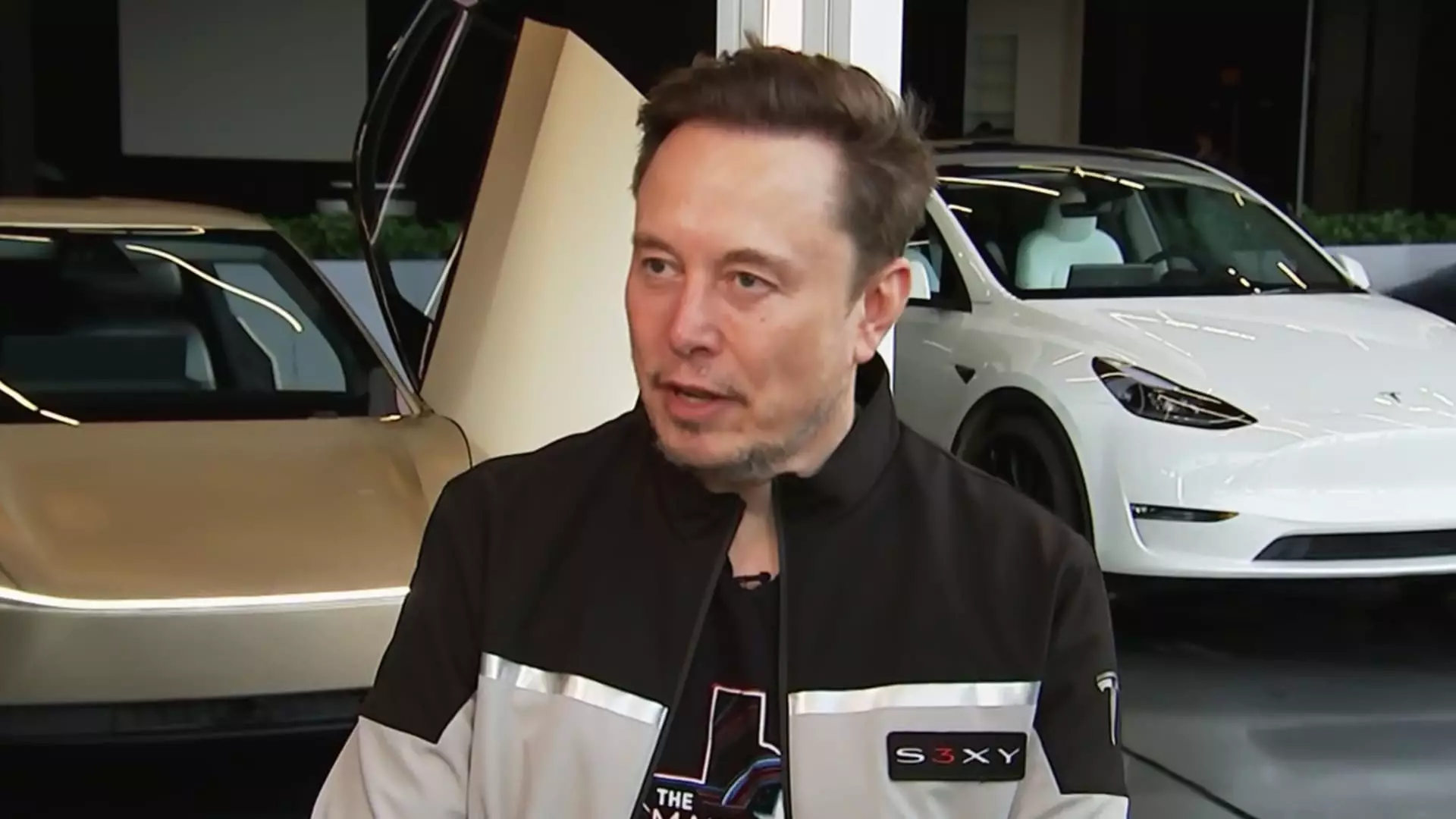The automotive landscape is on the cusp of an electrifying transformation, driven by Tesla’s audacious foray into the realm of autonomous driving. CEO Elon Musk recently announced the highly anticipated debut of Tesla’s robotaxi service in Austin, Texas, targeting a launch by the end of June. This bold initiative marks a significant stride toward realizing Musk’s vision of a future where self-driving vehicles are as commonplace as traditional cars. Initially, the service will operate with a fleet of only ten Model Y vehicles, a conservative start designed to validate the technology in a live environment.
What distinguishes Tesla’s approach from competitors like Waymo is its reliance on a camera-centric model rather than sophisticated radar and lidar systems. Musk positions this strategy as a more practical and scalable solution for urban mobility. It’s an ambitious gamble, but if successful, it could redefine how cities perceive and integrate autonomous transportation into their infrastructure.
Scaling Up: A Measured Approach to Autonomous Driving
Musk understands the high stakes involved in introducing a completely autonomous taxi service. Highlighting the importance of a pilot program, he stated, “It’s prudent for us to start with a small number, confirm that things are going well and then scale it up.” This cautious optimism reflects a mature understanding of the complexities associated with self-driving technology. With the initial phase geofenced to specific areas in Austin, the rollout provides a controlled testing ground to monitor the performance and safety of these vehicles rigorously.
Unlike other self-driving services, there will be no human safety driver present in the Tesla robotaxis. Instead, a remote monitoring system will oversee the fleet, a necessary measure to ensure the safety of passengers and pedestrians alike. Musk’s commitment to close observation is a testament to Tesla’s dedication to minimizing risks during this transition into uncharted territory.
The Competitive Edge: Tesla vs. Waymo
The rivalry between Tesla and Alphabet’s Waymo is a fascinating narrative in the autonomous vehicle saga. Waymo currently leads the market with an established fleet conducting approximately 250,000 paid rides weekly across various cities. However, Musk asserts that Tesla’s technology, which integrates artificial intelligence and computer vision, could ultimately surpass Waymo’s more sensor-focused methodology. He argues that the reliance on cameras and digital neural networks will yield a more efficient and expansive robotaxi service, potentially reinforcing Tesla’s position as a frontrunner in this sector.
Musk’s assertions about the superiority of his vision are not merely marketing rhetoric; they underscore a belief in a philosophy of innovation that prioritizes accessibility and scalability. Nevertheless, as history has shown, the path towards deploying a fully autonomous vehicle service is littered with obstacles, from regulatory hurdles to public acceptance.
Navigating Challenges: Sales Decline and Political Backlash
Despite the optimism surrounding Tesla’s robotaxi rollout, the company is grappling with several serious challenges. A notable 20% decline in automotive revenue during the first quarter of 2025 has raised eyebrows among analysts and investors alike. Musk has attributed this downturn to necessary retooling phases for the factory, a common issue in the industry. However, it raises questions about Tesla’s ability to maintain momentum while simultaneously innovating.
Compounding these challenges is the political fallout surrounding Musk’s active engagement in U.S. political affairs. His connections to the Trump administration and subsequent investments have sparked debates about the intersection of business leadership and political affiliation. During a recent interview, Musk provocatively posed the question: “When you buy a product, how much do you care about the political views of the CEO?” This statement encapsulates a larger discourse about consumer priorities and the potential impact of a CEO’s persona on brand loyalty.
The Road Ahead: Tesla’s Vision for Urban Mobility
As Musk commits to leading Tesla for the next five years, there is a palpable sense of urgency and responsibility attached to his vision. With an estimated net worth that places him among the wealthiest people in the world, the stakes of failure are higher than ever. Tesla’s successful implementation of its robotaxi service could establish the benchmark for future innovation in urban mobility, setting a precedent for how cities embrace self-driving technology.
The implications of this robotaxi initiative extend beyond Tesla itself; it represents a radical shift in how society envisions transportation. For urban planners, lawmakers, and everyday commuters, the arrival of autonomous taxis heralds not just technological advancement, but a new era of efficiency and sustainability that could alleviate traffic congestion and reduce carbon footprints. While the future remains uncertain, Elon Musk’s ambition guarantees that the discussion surrounding autonomous driving will remain at the forefront of technological conversation in the coming years.


Leave a Reply